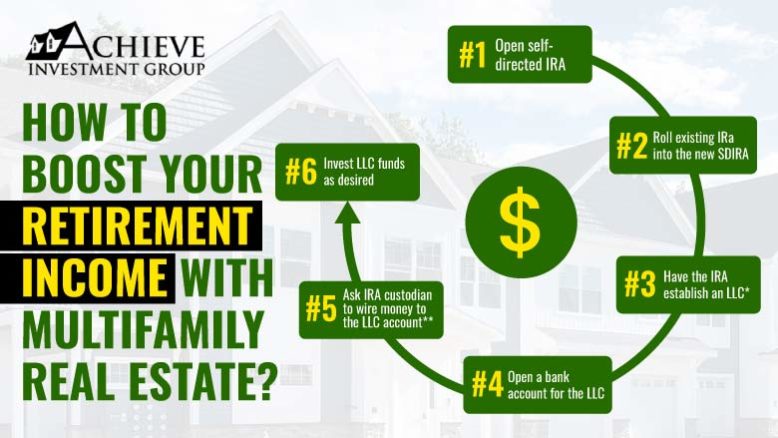Multifamily Real Estate: Navigating the Hall of Mirrors Amidst Strong Fundamentals and a Weak Market
In real estate investment, multifamily properties have long been regarded as a stable and profitable venture. With the ever-increasing demand for housing and the potential for generating consistent cash flow, multifamily real estate has attracted investors seeking to diversify their portfolios and secure long-term wealth. However, amidst a fluctuating market and varying economic conditions, navigating the multifamily landscape can sometimes feel like moving through a hall of mirrors – disorienting and filled with reflections of uncertainty. In this article, we will explore the current state of multifamily real estate, examine the strong fundamentals that make it an attractive option, and discuss strategies to overcome the challenges posed by a weak market. Understanding the Multifamily Market The Multifamily Real Estate Market Landscape Before diving into the intricacies of multifamily real estate, it’s essential to grasp the overall landscape of this market. Multifamily properties encompass buildings with multiple residential units, such as apartments and condominiums, catering to a diverse group of tenants. This real estate segment holds immense potential due to rising urbanization, changing lifestyle preferences, and the growing number of millennial and Gen Z renters. The Fundamentals of Multifamily Real Estate The attractiveness of multifamily properties lies in their strong fundamentals. Unlike single-family homes, which rely on a single tenant’s rental income, multifamily properties spread the risk across multiple units and tenants. This diversification minimizes vacancies’ impact, providing investors with a more stable income stream. Additionally, well-managed multifamily properties have the potential for economies of scale, allowing owners to reduce operational costs and increase profitability. Demand and Supply Dynamics The demand for multifamily housing has grown in recent years, driven by increased urban migration, lifestyle preferences, and job mobility. However, while demand remains robust, the supply of multifamily properties has also increased, leading to localized market saturation in some areas. Investors must carefully evaluate the supply and demand dynamics before making investment decisions. Navigating a Weak Market Despite the strong fundamentals, multifamily real estate is not immune to market fluctuations. Economic downturns and periods of uncertainty can impact the rental market and create challenges for property owners. Here are some strategies to navigate a weak market: Emphasizing Tenant Retention In a weak market, tenant retention becomes crucial. Maintaining a high tenant retention rate ensures a steady cash flow and reduces the impact of vacancies. Providing excellent customer service, responding promptly to maintenance requests, and offering attractive lease terms can foster tenant loyalty. Adaptability and Flexibility To survive a weak market, multifamily investors must be adaptable and flexible. This may involve adjusting rental rates, offering concessions, or exploring innovative amenities that cater to changing tenant preferences. Strategic Renovations and Upgrades Investing in property renovations and upgrades can enhance the value of multifamily assets and attract discerning tenants. Innovative renovations that improve energy efficiency modernize living spaces, and enhance overall aesthetics can give a competitive edge in a challenging market. Strategies for Success: Comprehensive Research: Thoroughly analyze local market conditions, rent trends, demographic shifts, and employment opportunities to make informed decisions. Partnerships and Networking: Collaborate with experienced property managers, real estate agents, and fellow investors to gain valuable insights and support. Long-Term Perspective: View multifamily real estate as a long-term investment. A weak market is temporary, and the property’s inherent strengths will eventually prevail. Resilience and Flexibility: Be prepared to adapt to changing circumstances, whether it’s adjusting rental rates, offering incentives to tenants, or implementing cost-saving measures. Conclusion Investing in multifamily real estate can be likened to a journey through a Hall of Mirrors, where the distinction between opportunities and risks can be blurred. While a weak market may present challenges, the bedrock of strong fundamentals in multifamily real estate can guide investors towards successful outcomes. By remaining vigilant, conducting thorough research, and embracing resilience, investors can navigate through the mirrors and uncover lucrative opportunities even amidst challenging times. Happy FAQs Q1: Is multifamily real estate a safe investment? A1: While no investment is entirely risk-free, multifamily real estate is generally considered a safer option due to its solid fundamentals and diversified income streams. Q2: How can I finance a multifamily property purchase? A2: Financing options for multifamily properties include conventional mortgages, Federal Housing Administration (FHA), and commercial real estate loans. Q3: Are there tax benefits to investing in multifamily real estate? A3: Yes, multifamily real estate investors can benefit from tax deductions on mortgage interest, property taxes, depreciation, and other expenses related to property management. Q4: What factors should I consider when evaluating a multifamily property? A4: Factors to consider include location, rental demand, vacancy rates, property condition, operating expenses, and potential for future growth. Q5: How can I find a reliable property management company for my multifamily investment? A5: Research property management companies in your area, read reviews, and interview potential candidates to find a company with a successful multifamily property management track record.









